Dubai constantly surprises food lovers with its hidden culinary gems and vibrant dining spots. Among the crowded food scene, Filipino restaurants carve out a unique space with bold, comforting flavors. Many locals and expats actively seek the best Filipino restaurants in Dubai for a taste of home or something refreshingly different. These places don’t just serve meals—they create memories wrapped in banana leaves and soy-marinated meats. Dive in and explore some of the most talked-about spots redefining Filipino food in the city.
KOYA FILIPINO EATERY
Nestled in Dubai Marina’s Jannah Place Hotel, Kooya Filipino Eatery invites diners into a vibrant world of Filipino flavors. Chef JP Anglo, originally from Bacolod, brings traditional recipes to life with creative flair. From tangy sinigang to rich, garlicky chicken inasal, the menu moves confidently between comfort and reinvention.
The interiors pay homage to the Philippines, echoing its lively street scenes through playful décor and warm lighting. Diners encounter flavors like calamansi, coconut vinegar, and lemongrass—aromas that don’t just flavor the dishes but ground them in cultural memory. The ambiance, though modern, leans heavily on nostalgia.
Vegetarians find thoughtful options here too, and dessert lovers often return just for the halo-halo. Kooya’s reputation continues to grow, especially on weekends, so booking a table isn’t just a tip—it’s survival. The rhythm of the kitchen, the detail on every plate, and the pride in every ingredient speak volumes, even before the first bite.
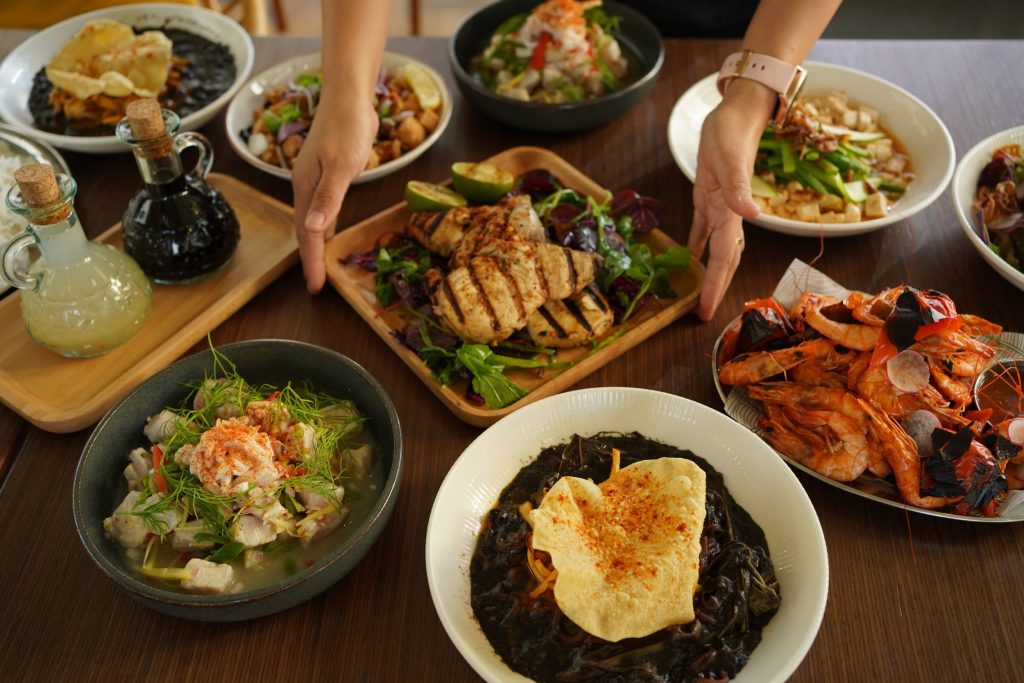
SPICE GRILL
Tucked inside Al Ghurair Center, Spice Grill hums with energy. The menu’s centerpiece? Boodle fight-style spreads—hands-on, messy, loud, and perfect. Actor Daniel Padilla co-owns the restaurant, but it’s the crab fat sauce and sinigang that steal the spotlight.
Under soft lighting and hints of wood and woven textures, Spice Grill feels less like a mall eatery and more like a gathering in someone’s home—if that someone had a kitchen staff and live musicians. Between bites of crispy pata and grilled squid, the air buzzes with conversation and occasional karaoke vibes.
Service is sharp, and tables fill quickly, especially when themed nights roll in. Catering options, parking convenience, and late hours round out the experience. In a city that never really stops eating, Spice Grill throws a party and everyone’s invited.
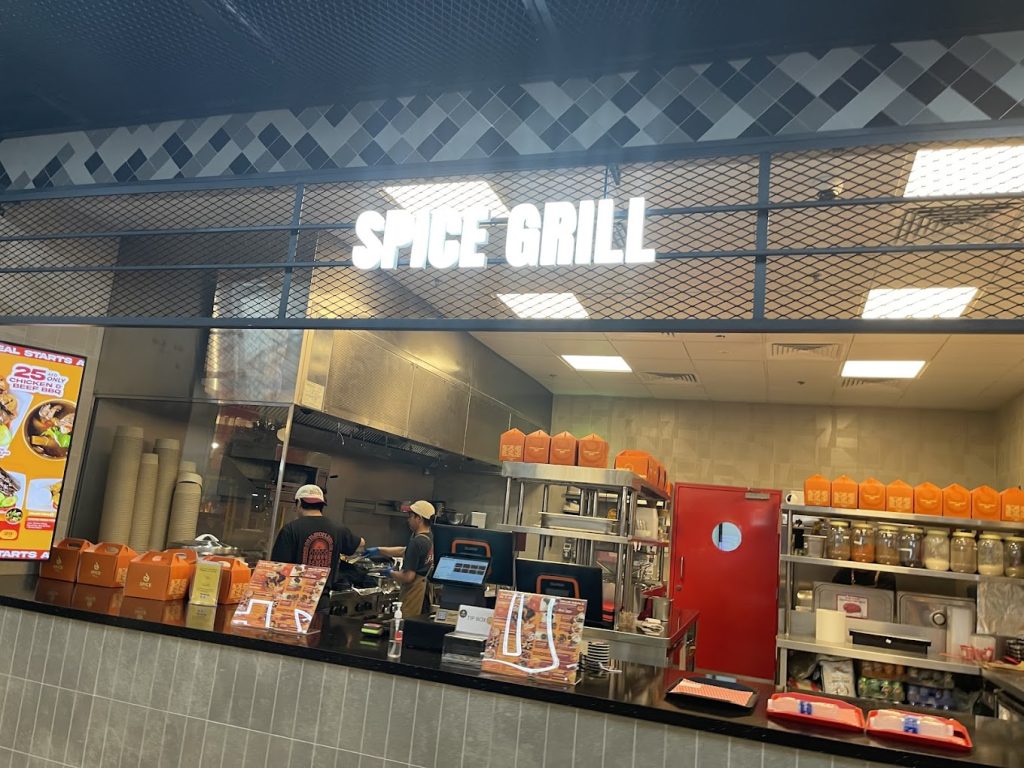
DAMPA SEAFOOD GRILL
Hidden in the heart of Deira, Dampa Seafood Grill throws away formality the moment you walk in. There are no plates, no pretensions—just seafood laid bare across the table, waiting for hands not forks. The boodle fight-style dining defines the experience, turning every meal into a shared spectacle. Piles of chili crab, buttered shrimp, grilled squid, mussels dripping with sauce—each bite competes for attention. Diners roll up their sleeves and surrender to the mess, the noise, the steam rising from mountains of rice. Everything feels spontaneous yet carefully choreographed, like chaos with flavor as its conductor.
The atmosphere leans toward the festive, always a little louder than expected, but never too much. Colorful walls, fast-moving servers, and laughter that echoes louder than any music—they create something between a street party and a seafood fever dream. Families, large groups, even first-timers who don’t know what a boodle fight is—they all leave full, stained, and satisfied. There’s something oddly nostalgic about eating with your hands, like the food demands your full attention and nothing less. And Dampa rewards that commitment with generous portions and fearless seasoning. You taste garlic, chili, ginger, citrus—sometimes all at once, sometimes in waves.
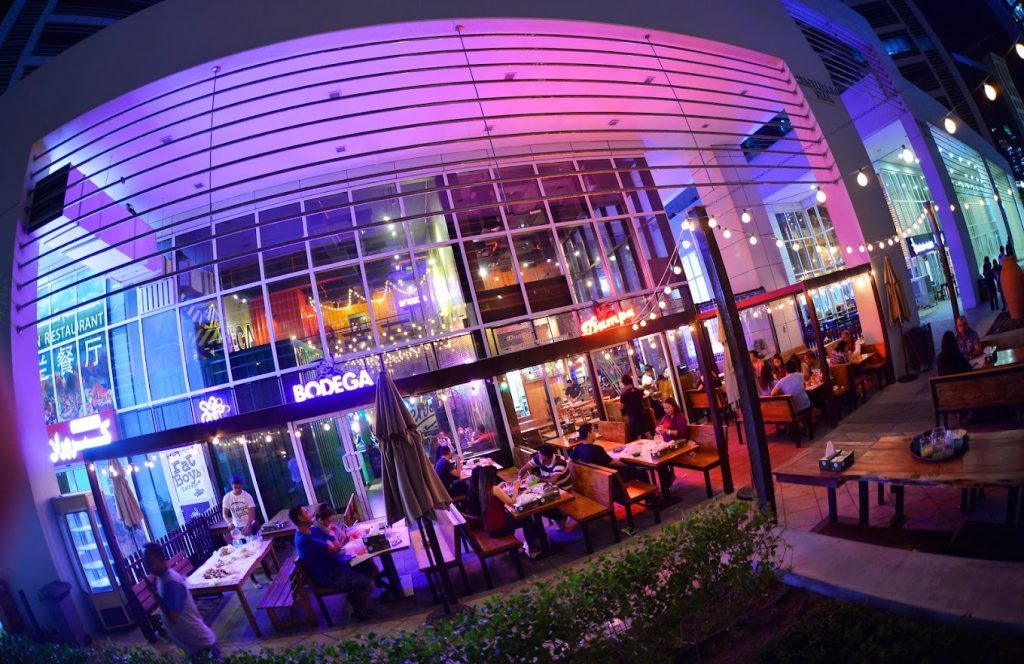
FILI LASA
Tucked away in Salah Al Din, Fili Lasa doesn’t shout for attention—but the food speaks loud. Its name, meaning “Filipino Taste,” sets the tone before the menu even arrives. The dishes come with no shortcuts—adobo, sinigang, lechon kawali—made from recipes passed down through generations. A bite feels familiar, even if it’s your first time. The sinigang strikes with tamarind sharpness while the adobo stays deep and rich, softened by rice that’s never an afterthought. Ingredients arrive fresh, unmasked, seasoned with a confident hand. It’s not fusion, not deconstructed—just what it needs to be.
Inside, the restaurant balances between homey and stylish. Light spills across wooden accents, capiz shell details, and warm-toned walls. You might catch Tagalog love songs in the background or overhear childhood memories shared over pancit. There’s space for families, quiet corners for two, and just enough noise to feel alive. Their desserts play nostalgia like an old record—halo-halo, leche flan, sans rival. People linger longer here, not just to eat, but to breathe in the feeling of being seen. The staff? Quick, kind, and never robotic.
It opens its doors daily, lunch through dinner, and fills quickly—especially during weekends or Filipino holidays. Parking’s no hassle, and takeout stays just as satisfying. They also cater, and not just food—they bring the mood. On certain nights, you might walk into a small celebration: music, décor, laughter thick in the air. Fili Lasa doesn’t reinvent Filipino food—it just remembers what made it special. In a city of distractions, that alone feels like a gift.

LOYOLA RESTAURANT
In Al Rigga’s late-night hum, Loyola Restaurant stretches its hours long enough to catch almost every hunger. It opens at dawn and barely closes, feeding everyone from workers on their way to shifts to friends ending theirs. Its location—right across ADCB, near the metro—makes it easy to spot, harder to forget. And once you walk in, the menu sprawls across classic Filipino comfort food and unexpected fast bites. There’s kare-kare next to cheeseburgers, sisig beside Caesar salad, and it somehow makes sense.
The place is big—probably one of the largest Filipino restaurants in the UAE—and that’s not just about square footage. It has space for groups, for families, for long conversations and quick silences. Despite its size, there’s no echo of emptiness—only clinks, chatter, and the occasional Tagalog tune. The décor keeps it warm, with elements nodding to traditional aesthetics: bamboo textures, earthy tones, woven patterns. Delivery orders fly out of the kitchen at all hours, and yet service inside stays fast and friendly. Loyola doesn’t overcomplicate things—it delivers familiarity with volume.
Weekends fill fast, but even weekdays carry a steady buzz. The pricing remains reasonable, keeping regulars loyal. Catering? They’ve mastered it. From small birthdays to community gatherings, they show up with flavor and consistency. Promotions rotate often—buy-one deals, combo meals, seasonal specials. It’s not trendy, and it doesn’t try to be. Loyola sticks to its rhythm, one bowl of beef tapa at a time.

DENCIO’S UAE
Inside Asiana Grand Hotel, Dencio’s UAE sets the mood differently—dimmed lights, soft beats, and a bar that never rushes you. More than a restaurant, it feels like a homecoming dressed up for a night out. This place has served Filipino favorites for nearly three decades, and it shows in every dish. You’ll find sizzling sisig so loud it steals the room’s attention. There’s crispy pata that cracks under fork pressure, and a noodle dish—Pinaputok na Pancit—that lives up to its explosive name. Every bite tells a story, not just a recipe.
Evenings start slow here, but once the live music kicks in, tables fill quickly. Performers echo OPM ballads, sometimes slipping into crowd favorites that spark spontaneous sing-alongs. The bar offers both local and imported drinks, designed to pair with the food rather than distract. Groups of friends come to celebrate, while solo diners find company in the vibe. Dencio’s leans into its identity unapologetically—Filipino food, Filipino sound, Filipino spirit. There’s no dilution, no need for translation. You either get it, or you come back until you do.
Open until late, it’s a go-to for both dinner and midnight cravings. The staff handles crowds like pros, always smiling, always quick on their feet. They know the regulars, remember your sauce preference, maybe even your birthday. Promotions are common, but the real reward lies in the consistency. The interiors fuse tradition with lounge-style comfort—woven patterns sit alongside leather seats. Dencio’s isn’t a trend, it’s a fixture. In a city obsessed with novelty, it earns its place through endurance.
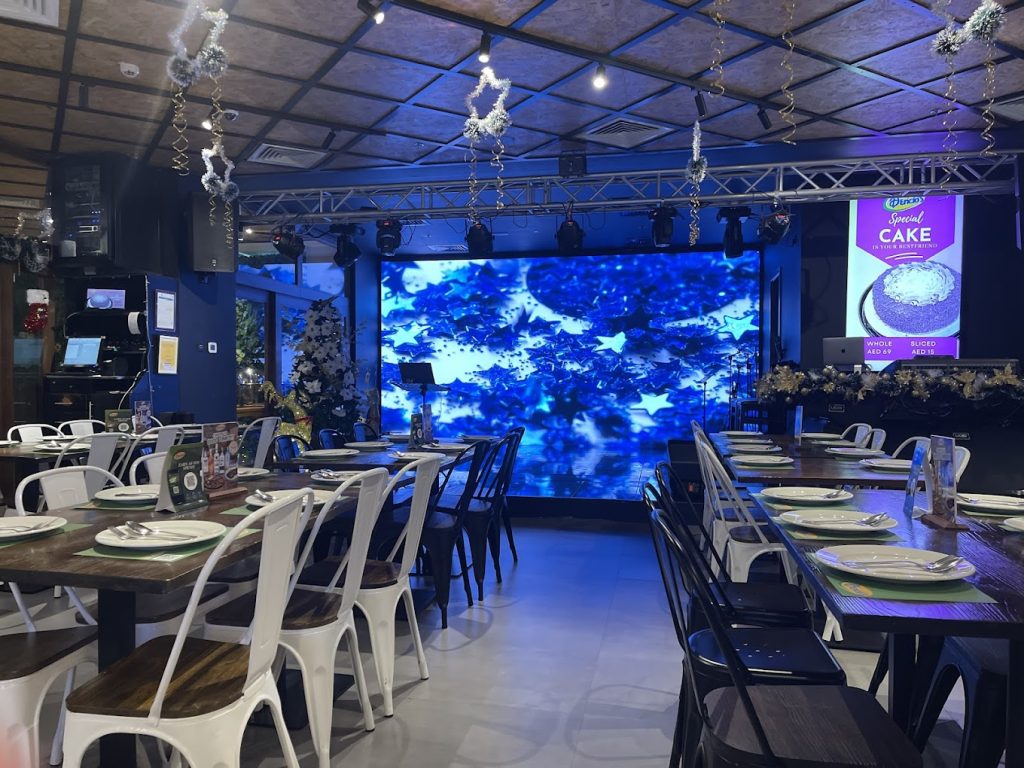
HOT PALAYOK RESTAURANT & GRILL
Somewhere between a quiet corner of Al Karama and a weekend street fair, Hot Palayok buzzes with life. The menu walks confidently between Filipino staples and broader Pan-Asian cravings—crispy crabs, Beef Sisig, heaps of garlic rice. Its buffet has gained a near-cult following, especially during weekday lunch hours when groups gather early just to grab a table. There’s Buko Pandan chilling in glasses while chefs at live cooking stations flip, grill, and stir under bright kitchen lights. Watching food come alive adds a thrill to the meal. The place isn’t just serving food—it’s performing it. Inside, street-art-style walls meet warm lighting and low chatter, forming a space that invites both energy and comfort.
Prices lean friendly, which helps explain the steady stream of regulars. It’s not just about affordability, though—portion sizes hold their own, and flavors land where they should. Weekday specials keep office workers returning, while families take over the weekends. Service is quick, never rushed, always alert. Even in peak hours, the staff remains composed, often anticipating what guests need before they ask. Whether you’re craving comfort or discovery, Hot Palayok meets you halfway. They don’t just plate Filipino food—they reflect the way it’s eaten: warm, lively, shared. A seat at this table isn’t just a meal; it’s a memory waiting to unfold.
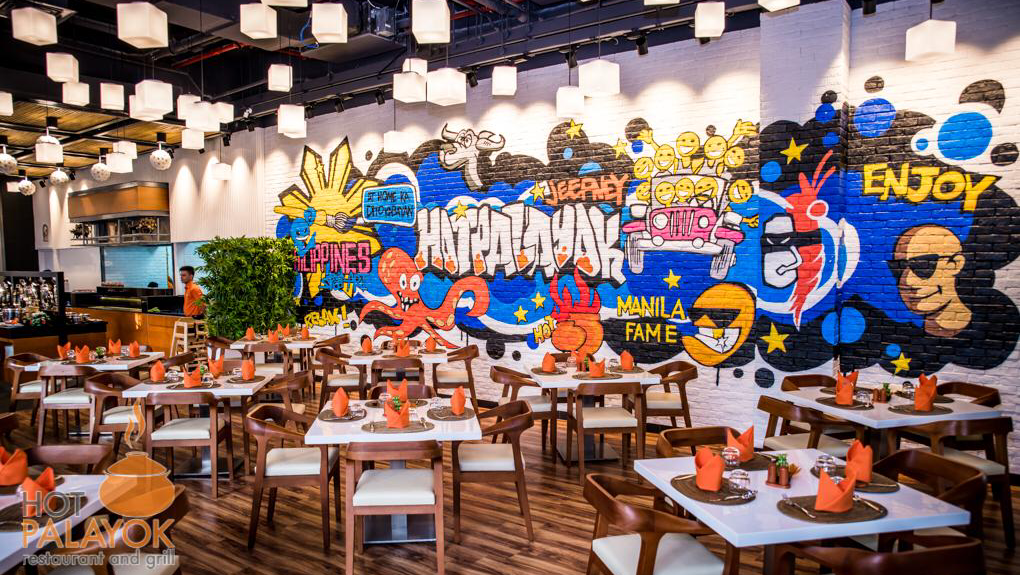
AL RIGGA MANG INASAL RESTAURANT LLC
Tucked beside the IBIS hotel on Rigga Road, Mang Inasal fires up its grills early and doesn’t stop until morning hours blur into sunrise. Their reputation for “The Best Chicken Inasal in Town” isn’t marketing—it’s muscle memory. The chicken arrives smoky, golden, glistening from a marinade that clings like history: vinegar, lemongrass, garlic, soy. Every bite crunches and melts in turn. Beyond Inasal, the menu throws in hearty Filipino staples for those wanting more: bangus, dinuguan, sinigang. Yet, no matter the dish, the flavors remain rooted, unpretentious, and deliberate. Rice comes unlimited; the hunger never overstays its welcome.
The setting balances function and warmth—simple lines with hints of home. Wood textures, modest lighting, and Tagalog signage lend it charm without excess. Open until 4:00 AM, it gathers both families and loners, workers and wanderers. Delivery is an option, but most choose to eat in—the grill’s scent is part of the draw. Service is clockwork efficient but never cold; smiles are frequent, orders land fast. Locals know it, tourists stumble into it, and few leave unimpressed. The regulars keep the place humming. Mang Inasal isn’t a trend—it’s a habit that keeps tasting right, long after you’ve left the table.
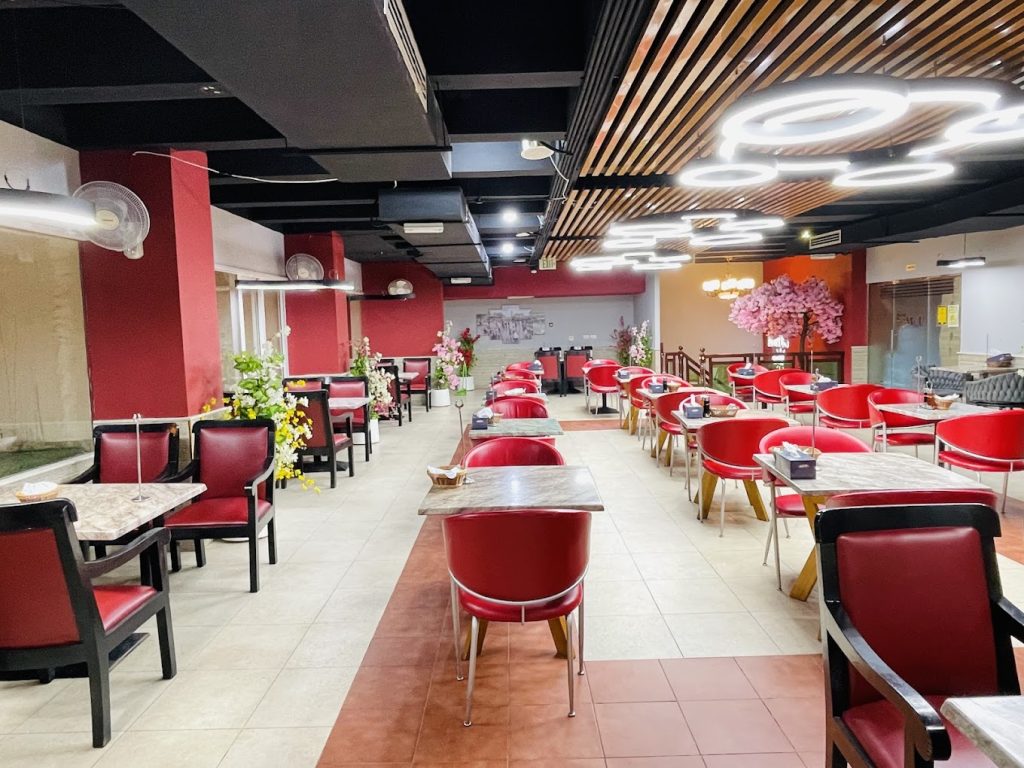


 then "Add to Home Screen"
then "Add to Home Screen"